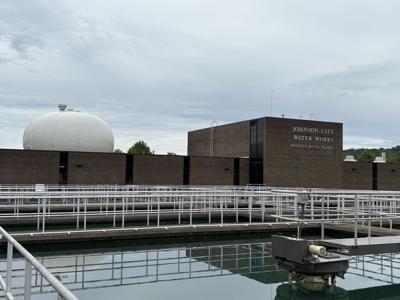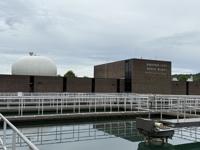The Watauga Water Treatment Plant runs like clockwork.
From helping out the fire department to performing chemistry tests about every two hours, there is more that goes into plant operations than perhaps many people realize.
During a tour of the plant provided to Six Rivers Media in recognition of Drinking Water Week, Water & Sewer Services Director Tom Witherspoon and Chief Water Plant Operator Randy Griffin explained some of the day-to-day duties that come with a facility that has the capacity to pump as much as 24 million gallons per day.
Drinking Water Week is a national weeklong observance meant to draw attention to what it takes to deliver a reliable, safe water supply to citizens across the country.
Griffin said the plant could ŌĆ£manipulateŌĆØ the system to push water into different areas to assist the fire department. He said there are 10 different pressure zones.
ŌĆ£So, what we do is, the fire department will say, ŌĆśHey, we've got a fire on this particular hydrant.ŌĆÖ We look up the hydrants of this pressure zone and we can actually manipulate ŌĆ” to some degree ŌĆ” to push water into different parts of our areas to help out fire.ŌĆØ
Large pump stations that are filling other water tanks in another part of the system can be turned off, ŌĆ£and that will get us more water to where the fire is at,ŌĆØ Witherspoon explained.
However, they are sometimes limited in their assistance.
ŌĆ£Sometimes ŌĆ” you just can't provide any more water at those points,ŌĆØ said Witherspoon. ŌĆ£But it is a process that we agree to and have documented with the fire department.ŌĆØ
These operations take place in the control room of the facility, which is monitored 24 hours a day, seven days a week. Additional monitoring is done at the plant's chemistry lab, which is in an adjoining room. Griffin said tests are performed on samples about every two hours.
ŌĆ£What we're basically doing is we're making sure that these numbers we're seeing ŌĆ” are accurate,ŌĆØ said Griffin. ŌĆ£So, we just kind of check some balances. We've got telemetry in there that's looking and drawing raw samples as it's going and it's giving us a number.ŌĆØ
Employees also run hard physical analyses to make sure the number is acceptable.
ŌĆ£If it's not (acceptable), then we can notify somebody or make chemical adjustments as needed,ŌĆØ Griffin said.
A water intake about two miles away pumps raw water from the Watauga River through a pipeline. A coagulant is added once it reaches the treatment plant.
ŌĆ£If we took a sample of the Watauga River and we let it sit on the shelf for a week, there are still some particles that won't settle out of that. They're suspended,ŌĆØ Witherspoon said.
Witherspoon pointed to large paddles turning in pits of water.
ŌĆ£These paddles going around make the particles stick together and they get heavy enough that, in going through the rest of the process, they're allowed to settle out,ŌĆØ he said.
This is known as a deflocculation and sedimentation process.
The water eventually ends up inside the plant, flows through charcoal filters and then into a clear well where water is held in a basin to be disinfected. It is then pumped out to customers.
Beginning around 1990, ║┌┴Ž╩ėŲĄ began moving away from gas chlorine. It's effective and economical, Witherspoon said.
ŌĆ£It does have some safety risk both for the employees and for the surrounding property owners,ŌĆØ said Witherspoon.
Four of the five plants ŌĆö consisting of two drinking water plants and three wastewater plants ŌĆö operated by ║┌┴Ž╩ėŲĄ now use what Witherspoon called ŌĆ£high-strength bleach.ŌĆØ
The Watauga Water Treatment Plant pumps out to three main tanks and then ŌĆ£the rest of the tanks, like the ones that look like a golf ball on a tee,ŌĆØ Witherspoon said. Those are re-pumped from other pump stations within the system.
Hurricane Helene had an impact on the quality of water, Witherspoon said.
More coagulant had to be added.
But lab tests showed optimum levels kept changing.
ŌĆ£It's not just, more is better and throw it to it,ŌĆØ he said.
Witherspoon said it took about three-and-a-half to four months before the river got ŌĆ£back to close to normal, both in turbidity and in color from what we were used to treating.ŌĆØ
The plant did not stop treating water during Helene, which Witherspoon attributed to the employees and decisions made by the city in years past, including making the source the river.








